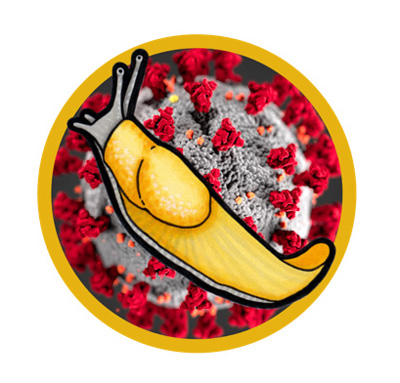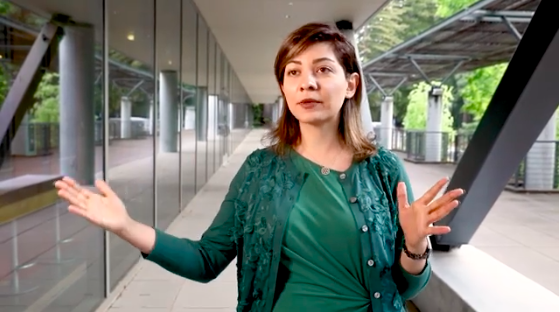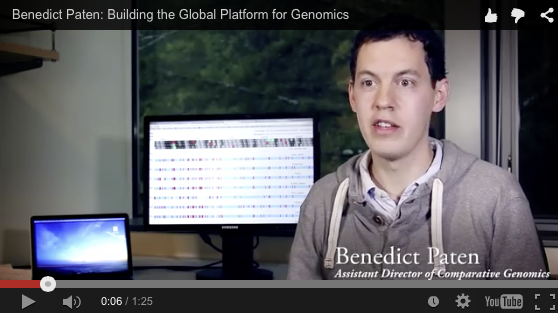Featured
UCSC researchers are taking on the coronavirus challenge on multiple fronts

By Tim Stephens
UC Santa Cruz
April 2, 2020 — Santa Cruz, CA
(Image source: UC Santa Cruz)
From developing diagnostic tests to conducting surveys of infection prevalence, campus researchers are doing what they can in response to the COVID-19 pandemic
The UC Santa Cruz campus has been eerily quiet since stay-at-home orders went into effect to limit the spread of the coronavirus causing the COVID-19 pandemic. Faculty are adapting to teaching classes online, and research labs have had to shut down much of their work.
Nevertheless, many UCSC researchers are finding ways to apply their expertise to help combat the pandemic.
“We scientists have a hard time sitting at home twiddling our thumbs. We have the tools and technology, and we want to try and help,” said Rebecca DuBois, an assistant professor of biomolecular engineering with expertise in virology and vaccine development.
One of the biggest challenges in the United States has been the limited capacity for diagnostic testing to determine who is infected with the virus. Several campus labs have the technical capacity to do these tests, but not the regulatory approval needed to offer diagnostic tests for clinical use. Faculty with expertise in this area have been working with the Office of Research to figure out how they can best deploy their resources within the regulatory limits to help the campus and local community.
“This is well within our wheelhouse. We have all the instrumentation and the people we need to do it,” said Jeremy Sanford, professor of molecular, cell, and developmental (MCD) biology.
Sanford, together with Professor of Chemistry and Biochemistry Michael Stone, Assistant Professor of MCD Biology Olena Vaske, and a team of other UCSC faculty, students, and staff, are working to establish a diagnostic testing lab at UCSC as quickly as possible to serve the immediate needs of the community during the pandemic. The team is currently working on receiving the necessary regulatory approvals. If successful, the UCSC testing lab has the potential to be the only facility capable of testing samples locally and turning around the results promptly, aiming for a turnaround time of within 24 hours.
Initially, they plan to conduct coronavirus testing for research and surveillance purposes, which they can do without the certification needed for diagnostic testing. This project would provide valuable information about the prevalence of coronavirus infections among people without symptoms in campus housing and potentially in the wider community. Their goal is to survey the campus and high-risk groups in the community, such as first responders and other essential workers.
“It would have to be anonymous, because without being a certified diagnostic lab we can’t return results to anyone,” Sanford explained. “But it’s a way to get started, and it can tell us what the prevalence is in asymptomatic people.”
Meanwhile, faculty in several departments have launched research projects that could lead to better and faster diagnostic tests, improved understanding of the virus and how the immune system responds to it, and a better sense of the future course of the pandemic.
Rapid diagnostics
Holger Schmidt, professor of electrical and computer engineering, has developed novel optical sensing technologies for biomedical diagnostics, and he is now adapting his “optofluidic chip” technology to provide rapid detection of the coronavirus. Nader Pourmand, professor of biomolecular engineering, was contacted by a health insurance company to develop a rapid coronavirus test that could be performed at pharmacies, and he is now working on this through a startup company based at the Startup Sandbox biotech incubator in Santa Cruz.
Any new diagnostic technology would have to undergo testing for validation and regulatory approval before it could be mass produced and deployed for clinical use. This new coronavirus may be with us for a long time, however, so improved diagnostics, with faster results and more widespread availability, could play an important role in later stages of the pandemic.
Immunologic testing, which involves detecting antibodies in blood samples to know if someone has already been exposed to the coronavirus, could also be important in managing the pandemic. Antibody tests require coronavirus antigens, the proteins on the surface of the virus particles that trigger an immune response. DuBois’ lab has the ability to make those antigens, and after learning they were in short supply she began production and will provide them for use by other researchers through a national repository maintained by the National Institutes of Health.
DuBois said her lab may also begin doing some antibody testing for the campus or local community. “A lot of people are going to be wondering if they were already exposed to this virus. That mild fever or sore throat they had—was that it? And understanding how many people on campus or in the community are positive for antibodies can be informative for making decisions on how to safely transition back to normal life while minimizing the risk of new infections,” DuBois said. “If I can do some screening of local samples to see if people have been exposed, that is one way I can help.”
Marm Kilpatrick, a professor of ecology and evolutionary biology who studies infectious disease dynamics, says people should be prepared for life to be different for the next year, and possibly longer. Features of COVID-19 that make it hard to control include its transmission rate and the fact that people without symptoms can spread the infection.
“If the current numbers are correct, it means each case can give rise to 2.5 new cases every five to six days,” Kilpatrick said. “That’s why it can move so fast, and there’s a delay between infection and getting sick, so the switch from things looking fine to hospitals being overwhelmed can happen really quickly.”
The stay-at-home orders now in effect are intended to slow the rate of spread of the disease, but they are having crippling effects on the economy. Kilpatrick said it may be possible to begin loosening restrictions if the initial lock-down period succeeds in keeping the number of cases down to a manageable level.
“You want to get to where there are few enough cases that you can do contact tracing and test everyone who had contact with each case. But high-capacity testing is crucial,” he said.
Genome sequencing
In February, soon after other labs had determined the genome sequence of the new coronavirus, researchers at the UC Santa Cruz Genomics Institute posted the sequence on the UCSC Genome Browser and began analyzing and annotating the coronavirus genome. Mark Akeson, professor of biomolecular engineering, is working on rapid sequencing of coronavirus samples using the nanopore sequencing technology he helped pioneer. By sequencing virus samples taken at different times and places, researchers can track genetic changes and trace the spread of different strains of the virus.
The availability of data on the UCSC Genome Browser has enabled Nikolaos Sgourakis, assistant professor of chemistry and biochemistry, and his graduate students to develop computational and experimental tools to identify and characterize hundreds of viral peptides that could be targeted by the immune system. His lab has developed a new technology to create a library of targets for studying T cell responses to the virus. Scientists still have a lot to learn about how the immune system responds to this novel virus and why the severity of the disease varies so much among individuals. Sgourakis’s findings could be used to design suitable peptide vaccines for high-risk groups. In addition, he said, this research could lead to a T-cell-based diagnostic test, with the potential to predict whether a patient’s adaptive immune response will be able to clear the virus.
These are just a few examples of the many ways in which researchers at UC Santa Cruz are responding to the COVID-19 crisis.
“People have really risen to the challenge,” said Isabel Bjork, executive director of the UC Santa Cruz Genomics Institute. “There is so much expertise here, and so much desire on the part of staff and researchers to make a difference. People are spending nights and weekends trying to make all this happen.”
This is an extraordinary time that has brought unprecedented changes to the lives and work of the entire campus community. Both Kilpatrick and DuBois, however, say they were not surprised by the emergence of this new disease.
“Any virologist would tell you it was just a matter of time,” DuBois said.
“It’s a perfect example of what we’ve all been talking about for a couple of decades now,” added Kilpatrick. “These outbreaks are rare, though, so people don’t worry enough to really be prepared for it.”
###
Tagged Baskin School of Engineering, COVID-19, UC Santa Cruz








